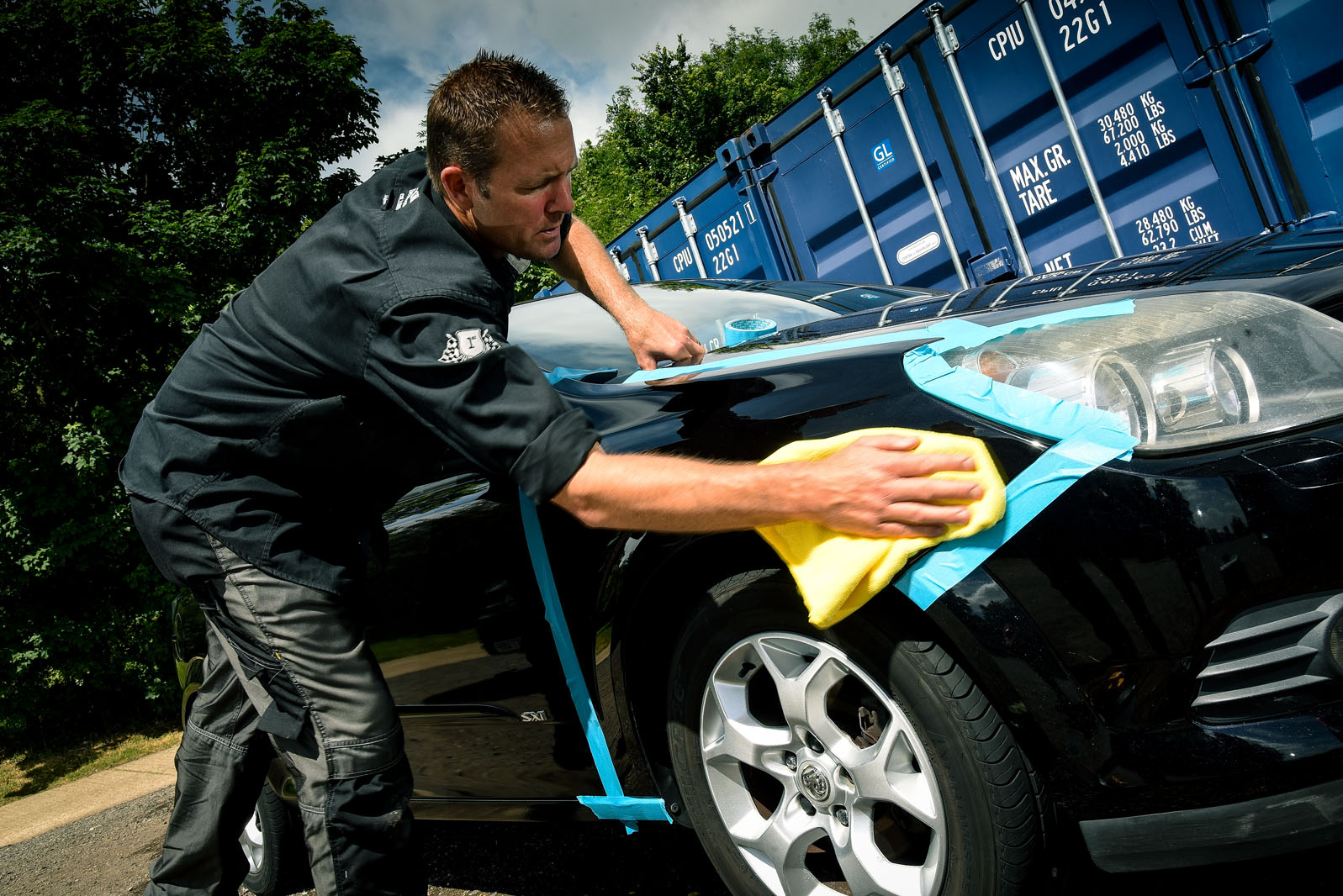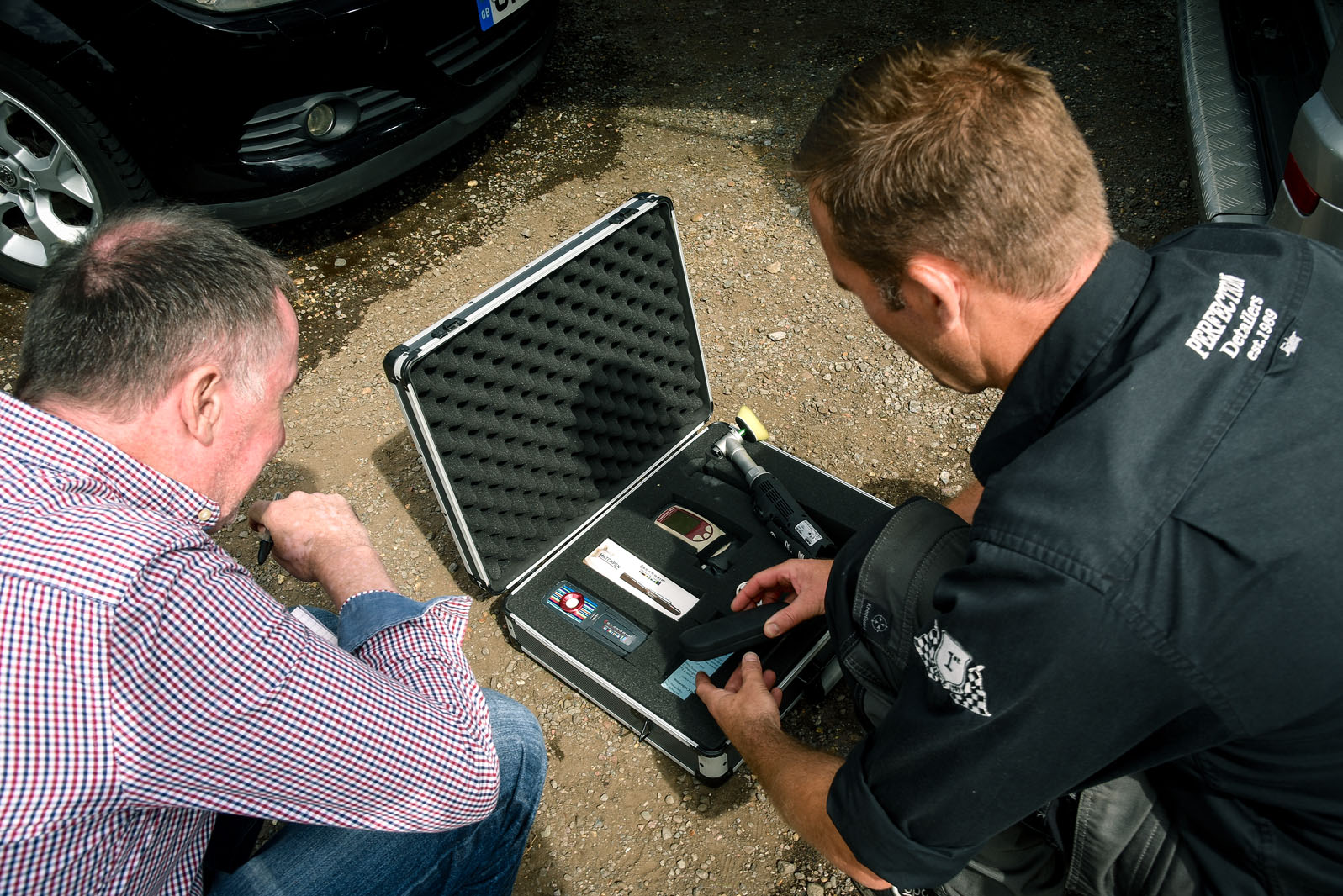"We’ve all got OCD. It’s how we channel it that counts,” says Richard Tipper. Mine is checking the fridge door’s closed.
Tipper’s is polishing cars for hours on end until they resemble mirrors – very fast and expensive ones.

He’s a car detailer, probably the best in Britain. For those who don’t know, detailing is a few rungs up the ladder from valeting, which is a wash and a vac. Detailing is all that times ten, plus taking the wheels off and cleaning inside them, Brillo-padding parts of the engine until they gleam, removing contaminants from the bodywork with a piece of soft clay – and measuring the thickness of the paint.

Tipper takes two professional-looking attacheà cases from the side of his gleaming Mercedes- Benz Vito van that bears the legend: ‘Perfection – Detailers of fine automobiles, 1989-2017.’ It’s a paragon of orderliness inside, with a place for everything and everything in its place, from
a 500-litre water tank and a rack of cleaning products (with all the labels facing the same direction) to a snazzy Bosch coffee maker.
One case contains a variety of tools and cleaning products, separated from each other by walls of precisely cut foam. (“I did that,” he says.) The other holds the devices Tipper uses to gauge the depth of paint and lacquer on a car so that he knows how much polishing an area of bodywork can stand.

“This one’s a magnetic paint depth gauge that can also tell me what the panel is made of,” he says, pointing to one of the gauges. “This other one’s an ultrasound depth gauge that can tell me how many layers there are and how deep each of them is. And this one shines a focused light onto the panel that shows up surface imperfections such as swirls, scratches and orange peel.”
To demonstrate, Tipper takes out the magnetic depth gauge and walks over to my 94,000-mile 2006-reg Vauxhall Astra three-door (a bargain, nicked from a son who’d lost his heart to a new Volkswagen Scirocco). Clearly, much of the driver’s side has been repainted and there’s lots of orange peel. (Remarkably, Tipper says that if he had time, he could get rid of that.) He places the magnetic gauge on the rear door. Thicker paint is a telltale sign of a respray and the Astra’s side is a deep 120 microns. Over at the front wing, though, it’s a factory-fresh 80 microns.



















































Join the debate
Add your comment
When I buy a car I do so to
When I buy a car I do so to drive it, not to spend my life cleaning and polishing it and worrying about whether I might wear through the paint...
@Bob Cholmondeley
Well if that makes you happy Bob then fine but everyone's not the same - some people buy a car for their collection, some show their cars and never drive them and some enjoy having an immaculate looking car AND driving it: Doesn't make them any less a car fan than you.
Also...
The devil's in the detail...
I've detailed myself and had cars detailed for 30 years -
most took between two and four days (the longest two weeks) - so doing it in a day isn't that thorough or exacting.
For a smooth as glass finish a serious detail might even involve flatting the entire car by hand (with wet and dry) before multi stage machine polishing and either layered carnuba wax or one of the modern sealants.
As far as washing's concerned, most serious amateurs and pro's would finish washing with a 0ppm filtered rinse and contactless jet dry (to prevent even the slighest swirl) but that's not mentioned in your guide. Also, for an article that's about the art of detailing, who in their right mind would "brillo pad" parts of the engine??? :o